★課程語言:日文解說.中文口譯(英文講義)
★課程實施:採「實體教室」及「網路視訊」兩者並行,請學員擇一參與
【主講人親筆】
With the hope that it will serve as basic information for promoting technology for ensuring battery safety, this lecture will explain the LIB characteristics in detailed in terms of battery reaction principles, constituent materials, and electrochemical characteristic-evaluation methods. The explanation and introduction are based on the characteristics of commercially available LIBs, which are expanding their market for mobile device applications, stationary energy storage, and in-vehicle applications. However, regarding LIB, there are some problems in the currently used evaluation method of battery characteristics and judgment method of its deterioration degree, and thus development of a new method is desired. Therefore, in this seminar the methods using impedance method and pulse method, etc. from the basics will be thoroughly explained. Then new solutions to these problems will be introduced. The scientific rationality of the proposed evaluation method is judged from the error value of the simulation for the fitting between the measurement result and the response based on the evaluation model of the pseudo equivalent circuit of the battery reaction. The seminar also explains the effectiveness of the machine learning method algorithm, we invented, that uses pulse response and impedance characteristics as training samples to quantitatively estimate the battery deterioration state with high accuracy and at high speed (seconds). After the seminar, we answer the questions of the participants.
【習得知識】
Structure and reaction mechanism of LIB, Interpretation and understanding of charge/discharge characteristics, Hysteresis phenomenon of output potential, battery constituent materials and electrode reaction characteristics, Handling of impedance measurement spectrum, Relationship between current-pulse response and electrical equivalent-circuit parameters as evaluation factors, Understanding the battery performance-status, Diagnosis methods of battery state of health(SOH), Applicability of machine learning method to LIB SOH, Standard measurement method for battery reuse (?), Chemical additives for improving LIB characteristics, Some topics in battery research and development, etc.
11月25日09:30~16:30 授課講師:日本業界專家(語言:日文演說.中文口譯)
Chapter 1 Introduction
1.1 Types of commercially available lithium ion secondary battery(LIB)
1.2 LIB Market
Chapter 2 Basics of LIB Reaction
2.1 Basic concept of reaction (difference from conventional electrochemistry)
A. Redox potential, Nernst equation, Electric double layer, Output potential, Application of inert zone potential, Applicability of Nernst equation (?)
B. Gas-lattice model (interaction within active materials layer, topo-chemical reaction)
C. Electrode reaction model of active solid-state material particles
2.2 Reaction process of active material particles
A. Lithium titanium oxide (LTO)
B. Olivine-type lithium iron phosphate
C. Graphite negative electrode
2.3 Lithium ion diffusion process and diffusion coefficient
Chapter 3 Charge/Discharge Characteristics
3.1 Charge/Discharge curve (energy density, rate characteristics)
3.2 Difference curve
3.3 Applicability of the Butler-Volmer equation (?)
Chapter 4 DC measurement and evaluation methods
4.1 Cyclic voltammetry
4.2 Pulse methods
Chapter 5 AC impedance measurement and evaluation methods
5.1 Measuring method
A. Principle/features
B. Electrical equivalent circuit as an evaluation model
C. Solid electrolyte interface (SEI) on particles
D. Parameter values for a pseudo-equivalent circuit
5.2 Impedance spectrum (IS)
A. Temperature, SOH and SOC dependence on the IS
B. 3D display for evaluation results
C. Evaluation of SOC and SOH
5.3 Application to deterioration degree diagnosis
Chapter 6 Features of commercially available LIB
6.1 Constituent materials and substances
6.2 Charge and discharge characteristics
6.3 Applicability and compatibility
Chapter 7 LIB performance deterioration and its mechanism
7.1 Change in characteristics and capacity decrease over time (1/2 rule)
7.2 Factors of deterioration
7.3 Composition analysis and structural analysis
Chapter 8 High-speed evaluation of deterioration degree and life
8.1 OCV curve and dV/dQ curve
8.2 Curve fitting
8.3 Newman model
8.4 Impedance characteristics (Cole-Cole plot & Bode plot)
8.5 Parameters evaluation and time constant for an equivalent circuit
(How to handle Warburg impedance characteristics (unsolved ?))
8.6 Applicability of Machine learning method
8.7 How to determine reuse against a deteriorated LIB (unresolved?)
Chapter 9 Pulse Measurement/Evaluation Method
9.1 Measurement method
A. Principle/features, How to obtain and handle data
B. Evaluation model using an equivalent circuit
C. Various parameter values of pseudo equivalent circuit
9.2 Transient response of the potential (CP: chrono-potentiogram)
A. Temperature, SOH and SOC dependence on CP
B. 3D display for evaluation results
C. Evaluation of SOC, SOH and temperature according to CP
9.3 Time-shortening of deterioration degree diagnosis
Chapter 10 Topics in surface chemistry and material research
10.1 Interface control, chemical modification, additives
10.2 Positive electrode, negative electrode, electrolyte, etc.
Chapter 11 Conclusion
Summary and introducing overview of our recent research projects, development products and contract business
【Question-and-answer session】
報名及優惠
TCIA會員報名,另享優惠,請洽詢:(02)2536-4647#10張小姐(電子郵箱sumken@sum-ken.com)

